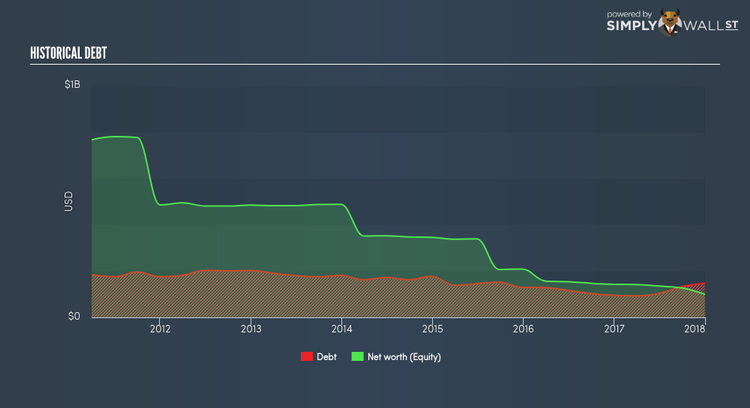Are Black Box Corporation’s (NASDAQ:BBOX) Interest Costs Too High?

While small-cap stocks, such as Black Box Corporation (NASDAQ:BBOX) with its market cap of US$33.31M, are popular for their explosive growth, investors should also be aware of their balance sheet to judge whether the company can survive a downturn. Communications companies, especially ones that are currently loss-making, tend to be high risk. So, understanding the company’s financial health becomes vital. Here are few basic financial health checks you should consider before taking the plunge. However, since I only look at basic financial figures, I suggest you dig deeper yourself into BBOX here.
How does BBOX’s operating cash flow stack up against its debt?
Over the past year, BBOX has reduced its debt from US$128.85M to US$93.13M , which is made up of current and long term debt. With this reduction in debt, BBOX’s cash and short-term investments stands at US$14.25M , ready to deploy into the business. On top of this, BBOX has generated US$39.93M in operating cash flow during the same period of time, resulting in an operating cash to total debt ratio of 42.87%, indicating that BBOX’s debt is appropriately covered by operating cash. This ratio can also be a sign of operational efficiency for unprofitable businesses since metrics such as return on asset (ROA) requires a positive net income. In BBOX’s case, it is able to generate 0.43x cash from its debt capital.
Can BBOX pay its short-term liabilities?
With current liabilities at US$177.51M, it appears that the company has maintained a safe level of current assets to meet its obligations, with the current ratio last standing at 1.51x. Generally, for Communications companies, this is a reasonable ratio since there is a bit of a cash buffer without leaving too much capital in a low-return environment.
Is BBOX’s debt level acceptable?
Since total debt levels have outpaced equities, BBOX is a highly leveraged company. This is not uncommon for a small-cap company given that debt tends to be lower-cost and at times, more accessible. Though, since BBOX is presently unprofitable, there’s a question of sustainability of its current operations. Maintaining a high level of debt, while revenues are still below costs, can be dangerous as liquidity tends to dry up in unexpected downturns.
Next Steps:
BBOX’s high cash coverage means that, although its debt levels are high, the company is able to utilise its borrowings efficiently in order to generate cash flow. Since there is also no concerns around BBOX’s liquidity needs, this may be its optimal capital structure for the time being. I admit this is a fairly basic analysis for BBOX’s financial health. Other important fundamentals need to be considered alongside. You should continue to research Black Box to get a more holistic view of the small-cap by looking at:
1. Historical Performance: What has BBOX’s returns been like over the past? Go into more detail in the past track record analysis and take a look at the free visual representations of our analysis for more clarity.
2. Other High-Performing Stocks: Are there other stocks that provide better prospects with proven track records? Explore our free list of these great stocks here.
To help readers see pass the short term volatility of the financial market, we aim to bring you a long-term focused research analysis purely driven by fundamental data. Note that our analysis does not factor in the latest price sensitive company announcements.
The author is an independent contributor and at the time of publication had no position in the stocks mentioned.

